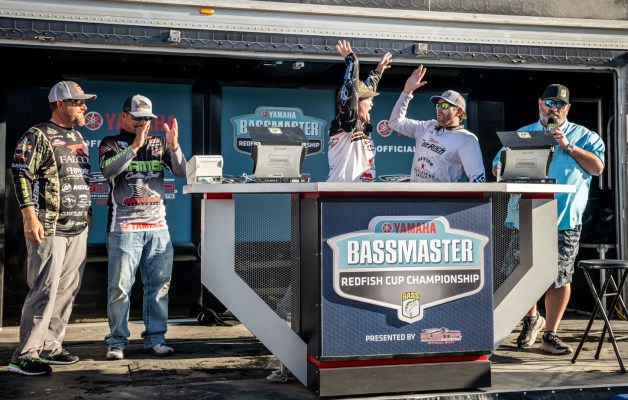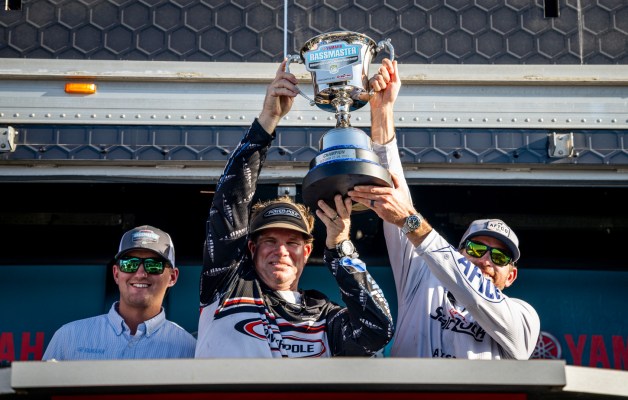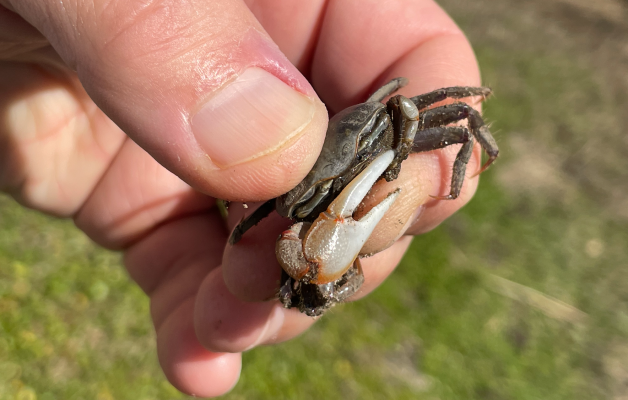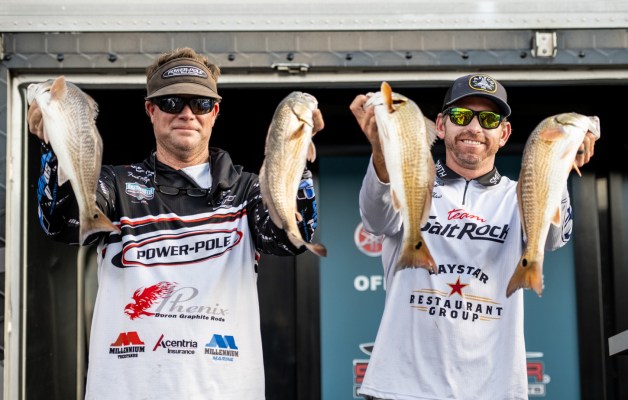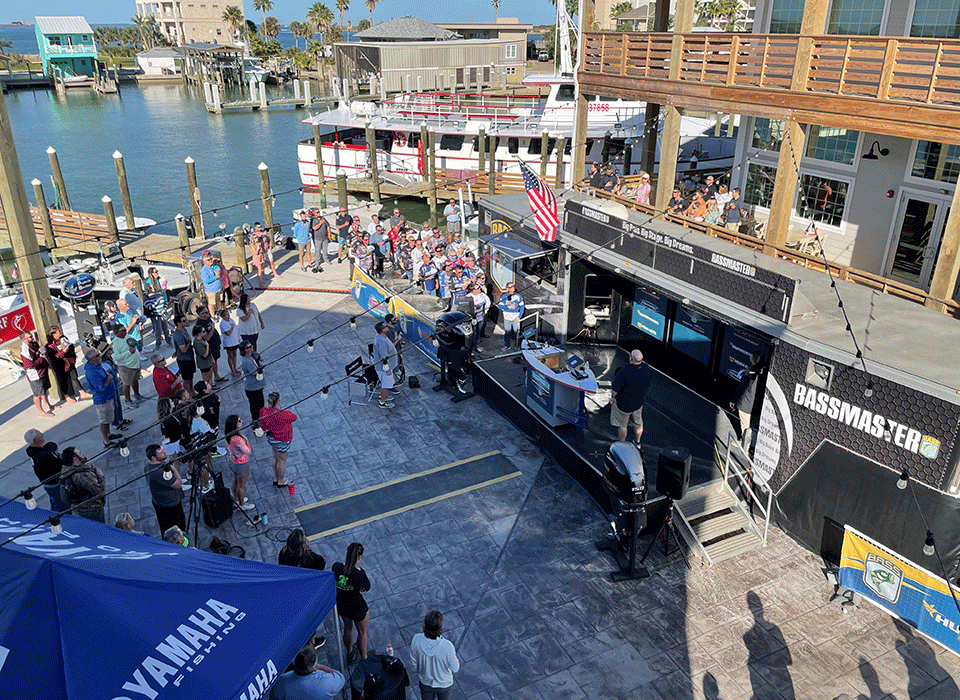
PORT ARANSAS, Texas — There have been numerous names and titles for this Gulf Coast city, but Port Aransas’ motto has long been “Where They Bite Every Day.”
The town has been a fishing mecca since the late 1800s and takes its title as “Fishing Capital of Texas” seriously. Port A is a destination for charters into the Gulf of Mexico, inshore fishing and tournaments on both. It also holds a claim as the birthplace of sport fishing boats.
“As far as fishing goes, this town has a very rich history,” said Capt. Dee Wallace, who grew up in Port Aransas catching anything and everything. “People were coming here to tarpon fish — the town used to be called Tarpon, Texas — when the Comanches were still raiding up in north Texas.”
Wallace works out of historic Fisherman’s Wharf, which again serves as headquarters for the second Yamaha Bassmaster Redfish Cup Championship presented by Skeeter, Nov. 4-6.
B.A.S.S. has invited some of its anglers along with qualifying redfish teams to compete in the televised competition, which airs on FS1 Saturday and Sunday mornings. Last year’s winners were crowned at the Fisherman’s Wharf dock, which lies between a full-service marina and tackle shop and popular Grumbles Seafood Co. restaurant. That’s the same ground where anglers have been showing off their catches for more than 130 years.
“We’re excited to be returning to Port Aransas, which really lived up to its reputation last year,” Tournament Director Hank Weldon said.
The Elite Series anglers competing this year are Drew Cook, Wes Logan, Scott Martin, Brandon Palaniuk and reigning champ Chris Zaldain, who will again team with Capt. Ryan Rickard.

Tarpon capital of the world
“Fisherman’s Wharf and Port Aransas are one of the best-kept secrets in the world. The sport fishing is incredible, from bay fish to deep sea, everything,” Wallace said from his second-floor office.
Overlooking the harbor, Aransas Pass and beyond, Wallace has “the best view in town,” and that’s where he conducts the business of yacht sales and promoting the area’s fisheries as tournament director.
Anglers from around the world have made their way to the small village surrounded by water and filled with 600-plus saltwater species. Seatrout and redfish were early fishing staples, but one species drew throngs, the tarpon.
Historian John Guthrie Ford wrote for the Port Aransas South Jetty that he believes the tarpon fishery was discovered soon after the Aransas Pass jetty project began in 1880. Ford surmised workers bolstering the shorelines saw massive schools of tarpon and began hiring Mustang Island boatmen to row them out for battles with the silver kings. Word spread.
In 1896, around the time the town’s name was changed from Ropesville to Tarpon, wealthy fishermen started the Tarpon Club on San Jose Island on the north side of the pass. Ford wrote that Col. Ned Green of New York brought a powerboat to the region around the turn of the century. Hanging in Wallace’s office is a framed photo of that power launch towing a line of rowboats out to fish.

“That boat in the front is how they used to take fishermen out. That was the first internal combustion engine in Port Aransas,” said Wallace, noting the man leading the procession was Ed Cotter, owner of the Tarpon Inn that’s in the background. “Engines were so rare he had to go to school where they were built up in Chicago to learn how to maintain an internal combustion engine.”
Wallace said he thought the engine was a Packard, and it ran on naptha, the precursor to gasoline. Taking out a number of anglers in shorter time helped grow the fishery and its legend.
With the first billfish caught on rod and reel not coming until 1913 in Australia, Port A was on the short list of big sport fishing venues that included the famed Avalon Tuna Club on Catalina Island off the coast of southern California.
“These two places were the epicenters of heavy tackle fishing back then,” Wallace said. “These tarpon were the biggest fish able to be caught on rod and reel at that time. All the tackle manufacturers from all over the world came here to test their tackle. Pflueger was one of the first.”
The reels were constructed of German silver, and Wallace, showing off one from the 1920s he had in his office, noted the wooden thumb release and marveled, “still no rust to this day.”
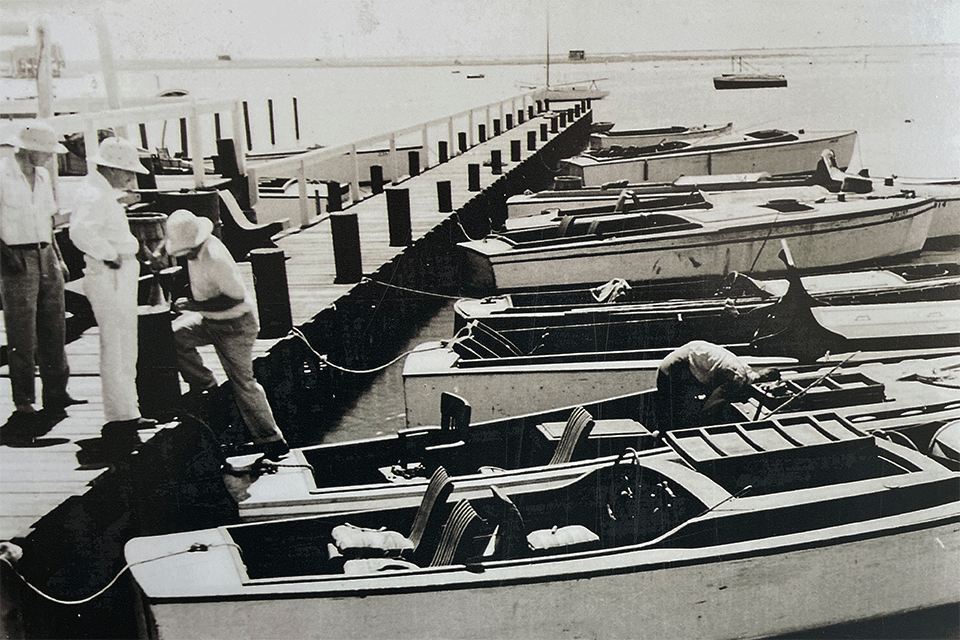
The Farley Boat gets cruising
That first power boat Cotter used was a predecessor of what was to come in watercraft. Necessity being the mother of invention, the fishingest little town in Texas can be credited with the development of sport fishing boats.
Barney and Fred Farley arrived in the region in 1910. A desire to be a tarpon guide made Barney realize the need for power boats, and in 1914 Fred established Barney and Son Boat Works. The first boat was launched the following year.
“The Farley skiff was the first saltwater sport fishing boat in the world,” Wallace said. “They were built here for going tarpon fishing at the end of the jetties. They had Model T or A engines, whatever they could find. They had 5- or 6-gallon fuel tank. They used the car transmission to troll.”
The 16- to 28-foot boats were designed with high bows and low sides to battle the rough chop in the pass, with stern-facing chairs in open cockpits for fishing in all directions. Windscreens came on later models.
Farley Boat Works, at 716 W. Avenue C, stands today as a museum that doubles as a workshop, where enthusiasts can help build a boat as it was done a century ago. Also, all around the city, there are replicas of Farley boats designed into planters, which celebrate their importance to the area.
FDR among famous visitors for tarpon
President Franklin Delano Roosevelt visited Port Aransas in the 1930s to chase tarpon, and he ended up in a Farley boat. The story goes that Barney Farley agreed to guide FDR in the president’s 35-foot boat, but after an unsuccessful outing, convinced him to go out on one of the Farley boats with his nephew, Don.
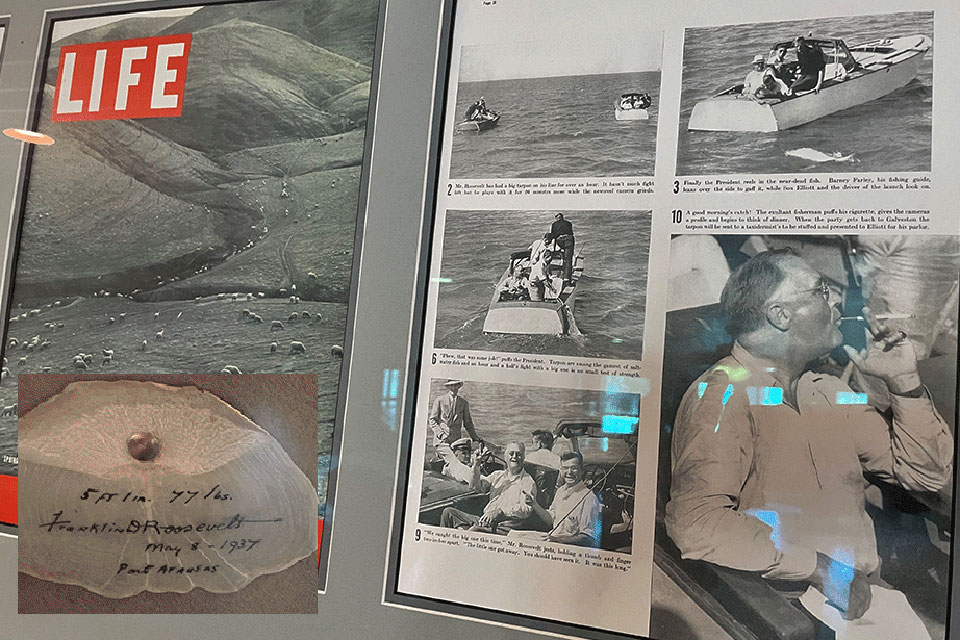
“I can’t believe he caught so many because of the secret service running around on boats in the water,” Don was reported to say.
FDR came back in May of 1937 to fish again from a Farley boat, and artifacts from the trip hang in the historic Tarpon Inn. Following tradition that began in the late 1880s, Roosevelt had a scale from his fish pulled to commemorate the catch, and it hangs on a wall adjacent to hundreds of tarpon scales that include the angler’s name, hometown, date and usually the fish’s size and weight. A Life magazine story and photos of FDR’s excursion also hangs in the hotel lobby, and he’s among many celebrities who stayed and fished in Port Aransas.
The hotel itself holds historical significance. It was first constructed in 1886 to house workers building the jetty, and soon became a hotel named The Tarpon Inn, which was destroyed in the 1919 hurricane. Upon rebuilding in 1923, new owner James M. Ellis had pilings buried deep in concrete and extending up into the attic. The reinforced building served as a shelter during subsequent storms and was headquarters for relief efforts.
The Inn is a long cast across the road from Fisherman’s Wharf, where many of the anglers boarded boats and brought back myriad gamefish.
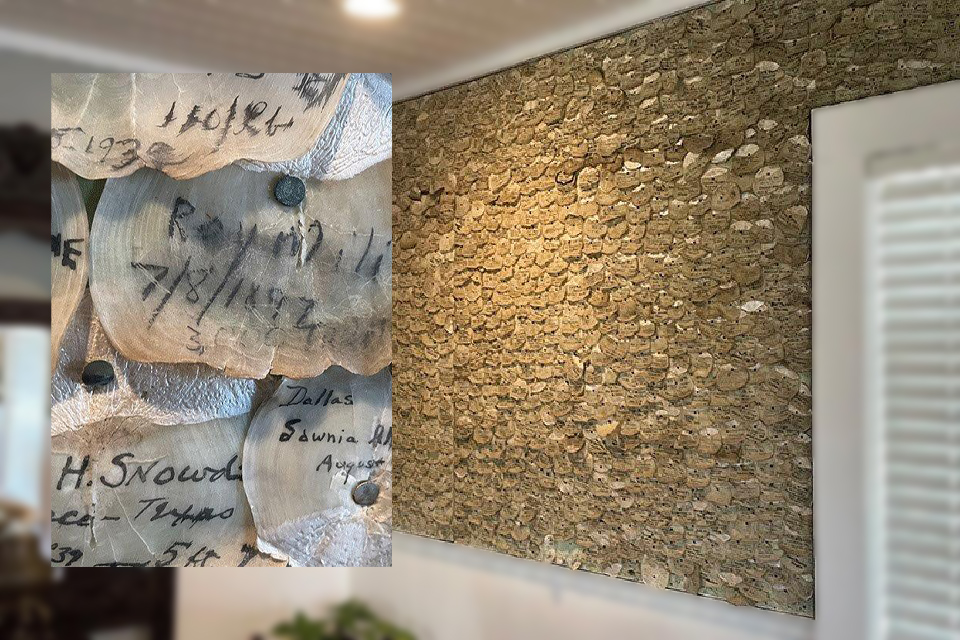
“The original fisherman’s Wharf started sometime in the ‘40s, right after World War II,” said Wallace, noting its fate of also being destroyed and rebuilt after hurricanes.
The latest construction includes a full-service marina and tackle shop. There are private charters available as well as party boat trips on the Wharf Cat and Scat Cat, 72-foot catamarans, taking anglers of all skill levels out for fare like snapper and mackerel to tuna, wahoo and the occasional marlin.
“There’s day trips, half-day trips, 50-hour trips,” Wallace said. “It changes according to what’s biting.
“It’s excellent fishing here, especially right now in October and November. In south Texas this time of year, you can shoot a world class deer and catch a world class redfish in the same day.”
Summer is huge for Port Aransas tourism. The town of about 3,500 grows to 60,000 and can swell to upward of 150,000 on holiday weekends.
“A lot of people are here for the beach, but a lot are here for fishing,” Wallace said. “Fishing built the town. The boat ramp, according to fish and wildlife, is the heaviest used in the state.”
Wallace was happy to host the Bassmaster Redfish Cup Championship as it fits right into the town’s tourism and fishing, and he’s hoping TV coverage on FS1 and Bassmaster.com can help spread the word.

Fisherman’s Wharf is a weigh-in/award presentation site for a number of tournaments each year, including the Texas Legends Billfish Tournament. In recent years, the winners brought in a 737-pound marlin, the largest ever weighed at Port Aransas.
“The Texas Legends is our baby,” said Wallace, who added the winners made off with $460,000.
Another gem is the Port Aransas Deep Sea Roundup, the longest running tournament on the Gulf Coast that’s heading into its 87th year.
“There’s usually about 600 entries on average,” Wallace said. “This is an everyman tournament. Second place was won on the Wharf Cat last year. You can win it on the jetties, you can win it on the beach. Its kingfish, snapper, anything. They have some intricate rules.”
Wallace said the Redfish Cup anglers might be interested to know they are weighing on historic ground that’s seen hundreds of thousands of travelers come by various methods for some 130 years.
“People came by steamboat from New Orleans, or they came by train on the San Antonio Aransas Pass Railway,” he said. “Many first came to go tarpon fishing.”
Now it’s multiple species. Traveling in by car, people can see shore- or wade-fishing just about everywhere. Visitors heading south ride along Redfish Bay Causeway to the Aransas Pass Ferry to get into Port A. Once there, a road named after the aforementioned Ed Cotter leads motorists toward the beach through town.
A quick turn north on either Trout or Tarpon streets leads to Fisherman’s Wharf, which can directly be linked to the town’s well-earned moniker as the “Fishing Capital of Texas.”


